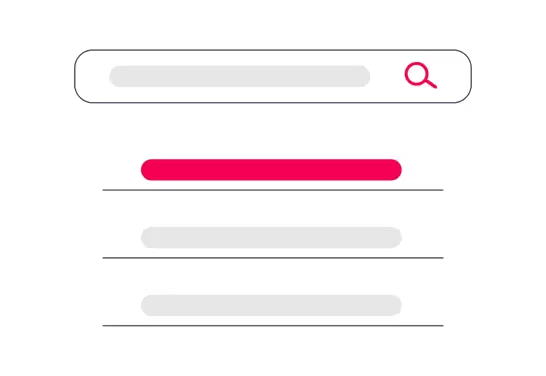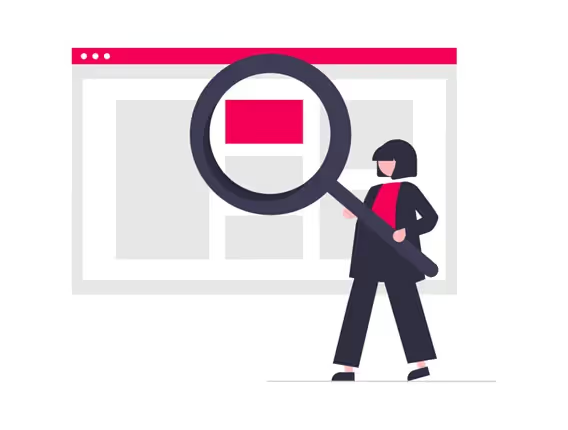How to create content to improve SEO positioning

You've mastered the art of creating compelling content, but why is SEO important?
It's no wonder that more and more companies are investing in content strategies to get results on their websites. The fact is that high-quality content encourages conversations with the target audience, generates trust and increases engagement.
As competition increases, it is essential that the content is considered to be of quality and that it provides a differential value to what exists. But how do you consider content to be of quality? the answer is increasingly complex, and fundamental SEO elements must be incorporated into the content.
In this article, we explain how to create content for improve SEO positioning and how to take your business's content strategy to the highest level.

What is SEO and how does it impact content?
SEO stands for Search Engine Optimisation, which defines the process of optimizing a website to position it organically in search engines such as Google.
When we talk about “optimization” we refer to the constant work that is done to improve the position of each page in search engines.
The objective is that, through the content created and constantly optimized, organic traffic is attracted and increased.
Why should your content be optimized for SEO?
SEO is now a fundamental component of the content marketing strategy and should never be overlooked. Not optimizing content for SEO is like spending hours decorating a cake and not displaying it on the sideboard—it may seem incredible, but at the end of the day, you're achieving minimal reach.
SEO is important for achieving greater visibility and is the key to online success. When users find a page on your website, they most likely used a search engine like Google to reach it. That is why it is essential improve the SEO quality of your website's content and ensure that it fits the user's search intent.
Types of SEO content
Blog posts aren't the only type of content on a website that can be optimized for SEO. In fact, all the content on a website can and should be optimized for its organic positioning.
In addition to blog posts, companies generally start by optimizing:
- Home
- Service pages
- Corporate Information
- Opinion articles
- Practical guides
- Case studies and success stories
This isn't an exhaustive list, but if you want to get started with content for your business, they're a good place to start.
Now, what exactly are the steps to optimize your content for SEO?

Steps to create and optimize SEO-friendly content
1. Identify and include keyword research
One of the fundamental components of SEO is incorporate your keywords. This involves strategically planning your content based on the most popular words and phrases in search results. This way, your content will be oriented to what people are looking for in relation to your business or sector.
For example, if you have a law firm, you should identify terms related to “law firm”, as you will have a better understanding of the interests of your target market and how they are searching for your content or services
Discovering keywords can seem like a difficult process, but with the right tools, it's easy to get started. The keyword research tools we recommend are:
- Ahrefs (Keywords Explorer)
- SEMrush (Keyword Overview & Keyword Magic Tool)
- Google Keyword Planner
- Google Trends
However, keep in mind that keyword analysis is not a new strategy. This means that it's not enough to include these keywords in your content. They must also appear in the URL, meta title, meta descriptions, and alt text.
Advice: Make sure that your keywords fit naturally with your content. Avoid overloading with keywords in all the available places, because if you incorporate them too much they can be considered spam. So, take advantage of them, but don't let them dominate your content.
2. Use titles and captions
There's nothing more daunting than a huge piece of text or a cluttered page layout. Not only is it annoying from the user's point of view, but this type of content structure impairs the user's experience with our website and, therefore, the bounce rate will be higher, affecting SEO positioning. This is because users rarely read an entire article, instead looking for easily navigable titles, captions, and content descriptions... and so does Google!
The inclusion of titles and subtitles makes it easier for both users and search engines to read and understand the content. Think of them as a content index: users will appreciate these signals, as they'll find exactly what they're looking for and choose to stay on your site. This will lower the page's bounce rate, which, in turn, will increase your SEO score.
In the world of SEO, titles and subtitles are commonly referred to as “H” tags and are ordered according to their hierarchy: H1, H2, H3, and so on. They are designed as header labels to organize content, while the number represents your priority level within the text.
Example of H tags according to hierarchy:
H1: Healthy cookies on the market
H2: Types of sweet and healthy cookies
H3: Low-calorie chocolate chip cookies
H3: Vanilla cookies
H2: Types of salty and healthy cookies
H3: Whole-grain cookies
H3: Cookies with seeds
Advice: Don't forget the keywords. Titles and captions are a perfect way to incorporate keywords, as search engines recognize that title tags are an important part of the text.
3. Identify the optimal content length
El Content that is SEO-friendly involves a lot of planning of the points you want to develop, in order to achieve the optimal extension of each article.
The ideal length of marketing content is much discussed, but we always recommend exceeding 1,000 words. This is because it has been proven that long content performs better in search engines, since it improves the authority and quality of the content in the eyes of Google.
Taking into account the length, it is always recommended that the structure be designed according to the audience your content is aimed at. For example, to capture and keep the attention of younger audiences, it is better if texts are short and agile, to meet shorter attention spans.
Try to make your content as long as possible, but make sure it has an appropriate length that satisfies your target audience and, above all, is of quality
Advice: Remember that when it comes to writing content, quality is still fundamental. The number of words alone will not guarantee that a content is SEO-friendly. Attracting and retaining users on the site should remain the main objective, so avoid diluting content simply to increase its length.
4. Optimize your images
Probably one of the most hidden components of SEO-friendly content is the ability to optimize images.
Increasingly, marketers are using images more frequently to accompany their content to incorporate graphic elements that make reading enjoyable. Modern consumers are constantly on the move and retaining their interest is more difficult than ever, making it increasingly necessary to include images for visual impact.
Therefore, optimizing images for SEO can help to better position content, especially if it's content that can also be found through images, such as a product such as clothing or mobile phones.
There are two main steps to take when optimizing images for SEO:
a) Change the size of the images
Make sure your images aren't too large or have a resolution that's too high. Large images with high resolution result in increased page load times and can increase the bounce rate. This will penalize the SEO positioning of the page.
b) Include alternative text (Alt Text)
The images are unrecognizable to search engines, so it's a good idea to provide them with descriptions of the image that incorporate the right keywords to be found. Alternative text (often called Alt text) does just that, allowing search engines to precisely index the content of the image and rank the page.
Advice: Make sure that the images you use complement the text. Adding images solely to take advantage of alternative text for the use of keywords will increase the chances that Google will determine that the content is irrelevant and of low quality.
5. Includes internal and external links
Updating the link structure is one of the best ways to create content that promotes SEO. To do this, you must understand the difference between internal and external links, and know exactly how and when to include them.
Internal links
Internal links direct people to other parts of the web. They work to increase user engagement by making content easily navigable and promoting other specific content of interest. This produces positive user experiences that lead to conversions and gain customer loyalty. Also, if the different pages of a website are linked, it is understood that these pages are relevant and, therefore, have a positive impact on their positioning.
External links
External links also have an impact, even if you are linking to content from other websites. This may seem counterproductive at first, but linking to credible and trustworthy sources will help improve your website's authority in search engine results. What's more, Google's algorithms follow linked content as one of the strongest content classification signals, since by linking to a referent website in a certain topic, it helps to understand what your content is really about.
Internal and external links are a good way to improve search engine rankings, but you have to avoid broken links and “link stuffing”. This will be detrimental to your content's overall SEO ranking and will be penalized by Google. Try to make your links relevant and interesting.
Advice: Link building is not a one-way direction. The more links you establish with external sites, the more likely it is that the same company will return the favor. This will make your website gain “backlinks”, which also tend to rank highly organically in search engines.
How can we help you?
At Novicell, we are a Barcelona-based SEO agency that encourages companies to achieve their full digital potential. It's important for us to present the facts about the state of your website's SEO and adapt our solutions specifically around the individual needs of your business. We provide technical, quality and international SEO services, from link building to off-page SEO. Our goal is simple: your success is our success.
If you are looking for an SEO agency to help you with your strategy, contact us or schedule a call to speak to one of our SEO consultants, who will be happy to help you.
How can we help you?
If you need more information, do not hesitate to contact us.
Cómo podemos ayudarte
Consulta los servicios con los que te ayudaremos a conseguir tus objetivos digitales.
